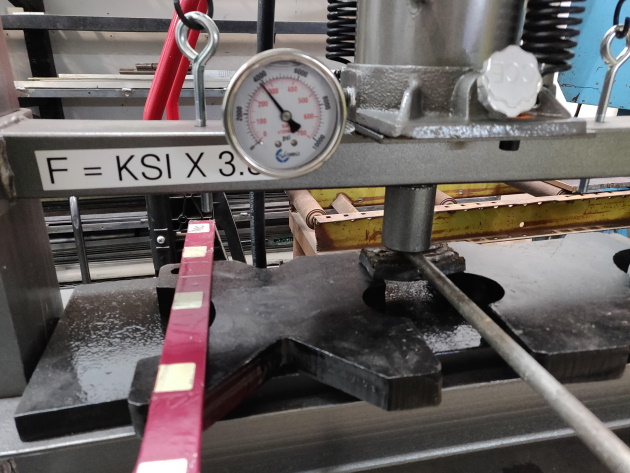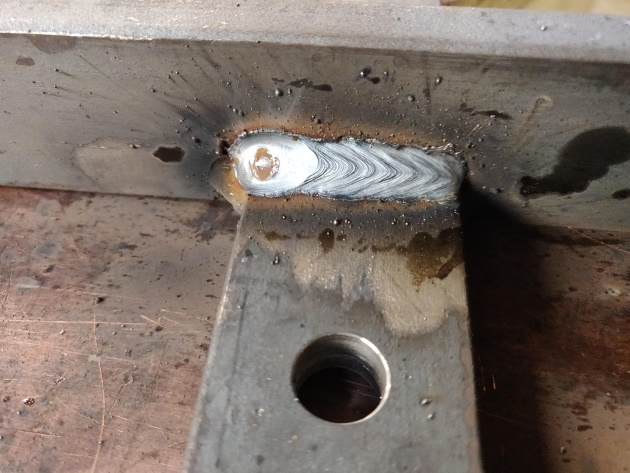A few weeks back, I did a welding job on some 1/2 inch bar stock. I tried a test weld with my Hobart 210 Handler. After the first test welds, I knew right away it would not work. The welds were cold and did not puddle or flow very well.

So how bad were the welds? Usually I just stick them in a vise and hammer them until they break. 1/2" welds, however, take a lot of force to break. So I put them in the press.



Note: This may not look like the same sample in the first picture, but it is. I used it for stick welding practice. I did not think about breaking it until later.

So how much force did it take to break? The gauge hit 4000 PSI so roughly 3.82 X 4000 = 15,280 lbs. I had to flip it over and bend it the other way a couple of times to get it to finally break off. It failed at the welds.

You can see the issue with the weld in the closeups. About a third of the length of the weld did not melt into the base metal. This occurred while starting the weld. The machine did not have enough power and my wire feed was too high which further cooled the puddle.


With effort, I probably could have made the machine work. I would most likely have had to preheat the parts. There were 128 welds so I just borrowed the right welder for the job.

The original weld still looks better than a lot of Harbor Freight welds. Most people would not have been able to see that original weld as a bad weld. It is more obvious in person since there is a high build up and no outward flow. While I was welding, I just did not feel comfortable with the weld. This gives me confirmation on what I saw in the puddle!
As a side note, there are a lot of great new products in the cobot welding market. Cobots are small robots intended for direct human robot interaction within a shared space. They are very quick to setup so they work for lower volume production. I am looking for a good place to jump into the robotics industry. Would you mind answering the survey below?
If you need some design and build help on your project, don't hesitate to give us a call!